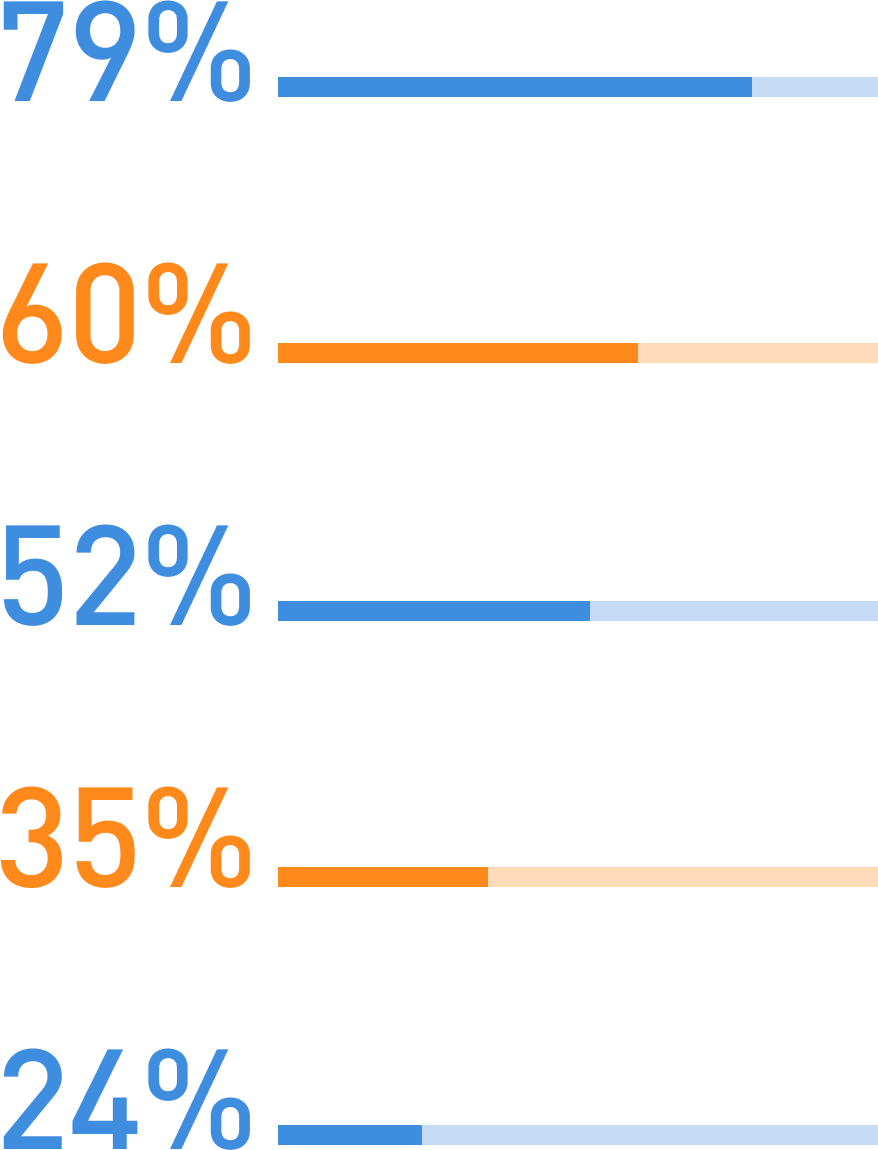North American
Federal 2024
Industry Trends Survey
Introduction
North American federal law enforcement agencies and the military are seeing a new era of challenges. Crime is changing, and this evolution is more severe than our predictions from even one year ago. Terrorism threats, cyberattacks and major crimes are increasing in frequency.
With more digital devices, greater data complexity and expanding volumes of digital evidence, it is imperative for North American federal law enforcement agencies and military organizations to develop strategies to keep pace with the growing public safety gap.
This whitepaper delves deeper into Cellebrite’s global aggregated 2024 Industry Trends Survey, distinguishing data and specialized insights relevant to North American federal government agencies that investigate crimes involving digital data. The survey received responses from 183 investigators, agency managers and digital forensic examiners from federal agencies across North America.
The findings underscore the need for North American federal government agencies to adopt technologies that will transform their workflows, create efficiencies and enable modern investigative techniques to accelerate justice.
Navigating data access challenges in digital forensic examinations
North American federal examiners are increasingly encountering more sophisticated digital devices, with 97% encountering smartphones as a key evidence source.
A significant portion, 74% of these examiners, are tasked with extracting data from the devices and conducting in-depth analysis.

These examiners face challenges at various stages of the process, especially related to accessing iOS and Android devices and extracting data from encrypted apps. These operational obstacles are compounded by the sheer volume of data that needs to be extracted, as well as the extraction time.
The survey found the biggest challenges North American federal examiners face are:





What are the biggest challenges you face when performing digital examinations?


In addition to the difficulties in accessing data, examiners also grapple with procedural challenges. Most North American federal examiners use physical means, such as USB sticks and portable hard drives, for sharing digital evidence within and between agencies. This practice is not only inefficient, but also fraught with risk.
Using physical methods to store and transport digital evidence can lead to chain of custody issues and bring forensic accountability into question.
A failure to establish a concrete chain of custody can cause judges to declare evidence inadmissible in court.
Additionally, physical methods increase the potential for evidence loss and/or exposure of sensitive materials, which could not only lead to re-harming victims, but also result in the perpetrator committing additional crimes and prevent justice from being served.
Despite these challenges, it is encouraging to note that 60% of federal examiners in North America have extensive digital forensics training. These experts primarily perform physical or full file system extractions.
Still, 29% of federal examiners in North America manually review unsupported app data, and 30% do not validate their findings with a second tool. These data points bring into focus the importance of enhancing procedural rigor and streamlining digital forensic investigations. This indicates the potential benefits from enhancing procedural rigor and streamlining digital forensics examinations.


The world of technology is always evolving. Is your agency staying ahead?
Smart devices today come with advanced capabilities, such as encrypted messaging apps and untraceable phone calls, built-in – making it challenging for agencies to gather the intel needed to solve or prevent issues.
Watch our webinar to learn more about the data access challenges that agencies face and potential solutions to overcome them.
What to Expect:

Discover how Cellebrite Inseyets sets a new benchmark, providing access to up to 5x more devices and extracting 60% more data from the latest iOS and Android systems.

Dive into distinctive features that elevate your digital forensic capabilities. Experience a solution meticulously designed to simplify complex processes and enhance overall efficiency.

Address the evolving needs of the industry with Cellebrite Inseyets. Explore solutions that streamline your workflows and simplify intricate processes for an enhanced examination experience.
Overcoming data complexities in
digital investigations
The challenges related to digital evidence that North American federal examiners face can affect an entire case.
Indeed, 78% of these examiners agree or strongly agree that the likelihood of case closure grows when digital evidence is available. The majority also agree or strongly agree that digital evidence increases case solvability (82%) and shortens the investigation cycle (69%).
However, the backlogs in the examination stage contribute to further challenges for federal investigators in North America. According to survey findings, the top challenges that investigators face today are related to data analysis, access to data and time to evidence.
North American federal investigators experience difficulties in gaining quick access to data and evidence, even for high priority cases. Even after investigators have received the evidence, the sheer volume of data that needs to be managed and analyzed presents a significant hurdle.
42% of North American federal investigators noted it can take more than 2 weeks to get the analysis report after a device is submitted for extraction, and that’s for high priority cases!

The process of sifting through the vast amount of information to garner relevant insights is both time-consuming and labor-intensive. A majority of North American federal investigators today still conduct a manual review of data.








With the explosion in the amount of data, manual processes are unsustainable. In fact, the average time spent reviewing digital evidence per case is 90 hours.
Additionally, almost half of the federal investigators in North America surveyed (48%) either agree or strongly agree that the review of digital data is too complex.
Although federal cases typically require more time to investigate due to their often complex nature, this also presents a major opportunity for federal agencies to implement software that automates a greater portion of the review process.
Advanced solutions that have artificial intelligence and machine learning features can reduce the number of man hours needed to surface key evidence.
Streamlining the review process can significantly enhance the efficiency of investigations, reduce time-to-evidence and increase case resolution.
Utilizing a solution that is compliant with federal government authorized programs, such as FedRAMP, ensures that data is processed and stored in a FISMA compliant manner, in addition to the efficiency and automation gains.
This enables highly secure collaboration between agencies and minimizes the risks involved in managing digital evidence for admissibility in court.
Conclusion
The challenges that North American federal agencies face are growing exponentially due to the rapid development of technology.
Despite the difficulties posed by data access, review and management, digital evidence remains a vital component in successful investigations and case closures.
There is a clear need for North American federal agencies to adopt advanced technological solutions that can accelerate processes, while ensuring procedural rigor.
By investing in these solutions, agencies can streamline the review process, reduce timeto- evidence, and ultimately increase case resolution.
As the digital landscape continues to transform, it is crucial for the federal government to keep pace, ensuring justice is served in this ever-evolving digital age.







